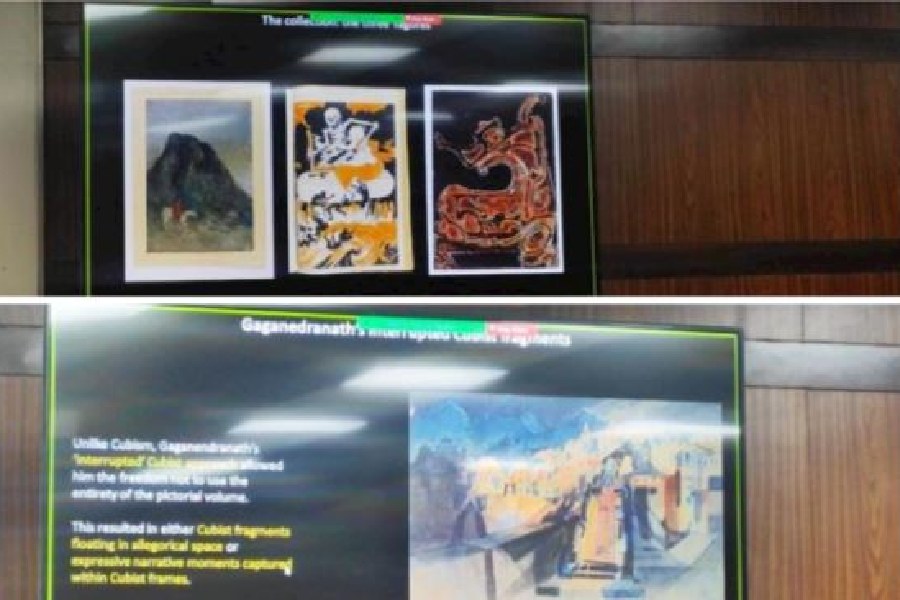An augmented reality (AR) exhibition enables visitors to Abanindranath Tagore’s (1871-1951) baganbari at Konnagar, in Hooghly, to see a selection of his artworks, which are in the collection of the Victoria Memorial Hall (VMH) and Victoria & Albert Hall (V&A), London.
A first of its kind in India, Modernity, Nationhood and the Unconscious: Abanindranath Tagore and the Garden House in Konnagar, curated by Soumyen Bandyopadhyay of the University of Liverpool, combines digital technology with archival history and digitised artworks that are being exhibited at a restored heritage site, where the artist spent some of his formative years.
The exhibition at the Konnagar baganbari has QR codes, which when scanned enable the visitors to have a look at the AR-enabled artworks together with the curatorial note. The digital exhibition is also hosted on the VMH website.
The Konnagar baganbari was in ruins. It was rescued from the clutches of land sharks and restored through the efforts of the common
people and the local municipality.
The exhibition, a collaboration between the University of Liverpool, VMH, Feed AR, Intach, Hooghly, was inaugurated on Friday at the VMH in a hybrid mode with attendees from the University of Liverpool, art historian Partha Mitter and numerous other visitors, who were present physically and virtually.
As Mitter said at the inauguration: “It’s an innovative and completely new project. Technology enables us to create a virtual universe. Such immersive digital exhibition is interesting, particularly in a country with small museum resources.”
Talking about the Konnagar baganbari, Mitter said: “Garden houses by the rivers and also in the interiors started in 1793. The East India Company built such garden houses in Barrackpore and other places.
The baganbari in Konnagar was built in 1834 and is a symmetrical colonial house with verandahs flanked by bedrooms.”
Abanindranath spent his summer breaks in the late 1870s at the baganbari and talks about his life in the house in his memoir Jorasankor Dhare.
The exhibition, which shows works by Abanindranath, Gaganendranath and Rabindranath Tagore, situates the artworks in the context of the baganbari, its influence on Abanindranath and various extraneous factors of the 19th century art movement.
Mitter said: “The Bengal School of Art was attacked by modernism that arrived from the West, particularly the Bauhaus movement that also held an exhibition in Kolkata in 1922. Abanindranath was not so much involved with modernism as was his elder brother Gaganendranath, who moved away from Orientalism. It was Rabindranath who developed a modern, avant-garde art and he had links with modernists in Europe.”
Bandyopadhyay, who is the Sir James Stirling Chair of Architecture at the University of Liverpool and heads the Centre for Study of Architecture and Cultural Heritage of India, Arabia and Maghreb (ArCHIAM), laid out the exhibition: “Abanindranath’s Bharat Mata is represented at the heart of the baganbari at central hall. The central room is titled ‘Narrating the Nation’ which has Abanindranath’s Asoka’s Queen, Gocharan and others.
The south veranda is devoted to modernity, featuring Gaganendranath’s paintings that took Cubism beyond Cubism by fusing it with allegory.
The north veranda titled “The Realm of the Unconscious” has Rabindranath’s lithographs. The eastern patio entrance and the front room locate Abanindranath’s works and memories in the context of the garden house, like the jackfruit tree that survives from the times of Abanindranath to this day, and narrates the social history of garden houses that emerged in the nineteenth century,” said Bandyopadhyay.






